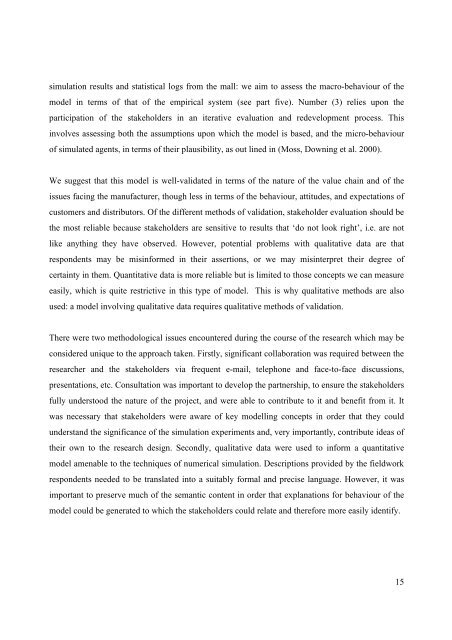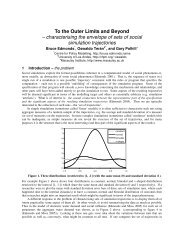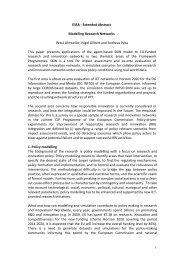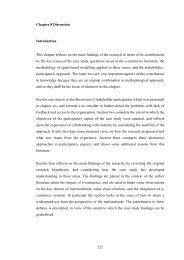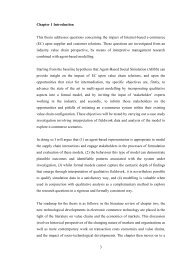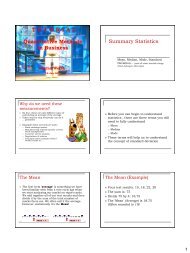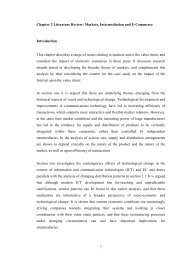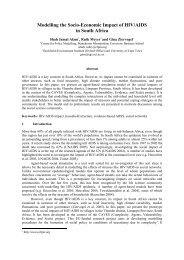1 Agent-Based Modelling Incorporating Qualitative and Quantitative ...
1 Agent-Based Modelling Incorporating Qualitative and Quantitative ...
1 Agent-Based Modelling Incorporating Qualitative and Quantitative ...
You also want an ePaper? Increase the reach of your titles
YUMPU automatically turns print PDFs into web optimized ePapers that Google loves.
simulation results <strong>and</strong> statistical logs from the mall: we aim to assess the macro-behaviour of the<br />
model in terms of that of the empirical system (see part five). Number (3) relies upon the<br />
participation of the stakeholders in an iterative evaluation <strong>and</strong> redevelopment process. This<br />
involves assessing both the assumptions upon which the model is based, <strong>and</strong> the micro-behaviour<br />
of simulated agents, in terms of their plausibility, as out lined in (Moss, Downing et al. 2000).<br />
We suggest that this model is well-validated in terms of the nature of the value chain <strong>and</strong> of the<br />
issues facing the manufacturer, though less in terms of the behaviour, attitudes, <strong>and</strong> expectations of<br />
customers <strong>and</strong> distributors. Of the different methods of validation, stakeholder evaluation should be<br />
the most reliable because stakeholders are sensitive to results that ‘do not look right’, i.e. are not<br />
like anything they have observed. However, potential problems with qualitative data are that<br />
respondents may be misinformed in their assertions, or we may misinterpret their degree of<br />
certainty in them. <strong>Quantitative</strong> data is more reliable but is limited to those concepts we can measure<br />
easily, which is quite restrictive in this type of model. This is why qualitative methods are also<br />
used: a model involving qualitative data requires qualitative methods of validation.<br />
There were two methodological issues encountered during the course of the research which may be<br />
considered unique to the approach taken. Firstly, significant collaboration was required between the<br />
researcher <strong>and</strong> the stakeholders via frequent e-mail, telephone <strong>and</strong> face-to-face discussions,<br />
presentations, etc. Consultation was important to develop the partnership, to ensure the stakeholders<br />
fully understood the nature of the project, <strong>and</strong> were able to contribute to it <strong>and</strong> benefit from it. It<br />
was necessary that stakeholders were aware of key modelling concepts in order that they could<br />
underst<strong>and</strong> the significance of the simulation experiments <strong>and</strong>, very importantly, contribute ideas of<br />
their own to the research design. Secondly, qualitative data were used to inform a quantitative<br />
model amenable to the techniques of numerical simulation. Descriptions provided by the fieldwork<br />
respondents needed to be translated into a suitably formal <strong>and</strong> precise language. However, it was<br />
important to preserve much of the semantic content in order that explanations for behaviour of the<br />
model could be generated to which the stakeholders could relate <strong>and</strong> therefore more easily identify.<br />
15


